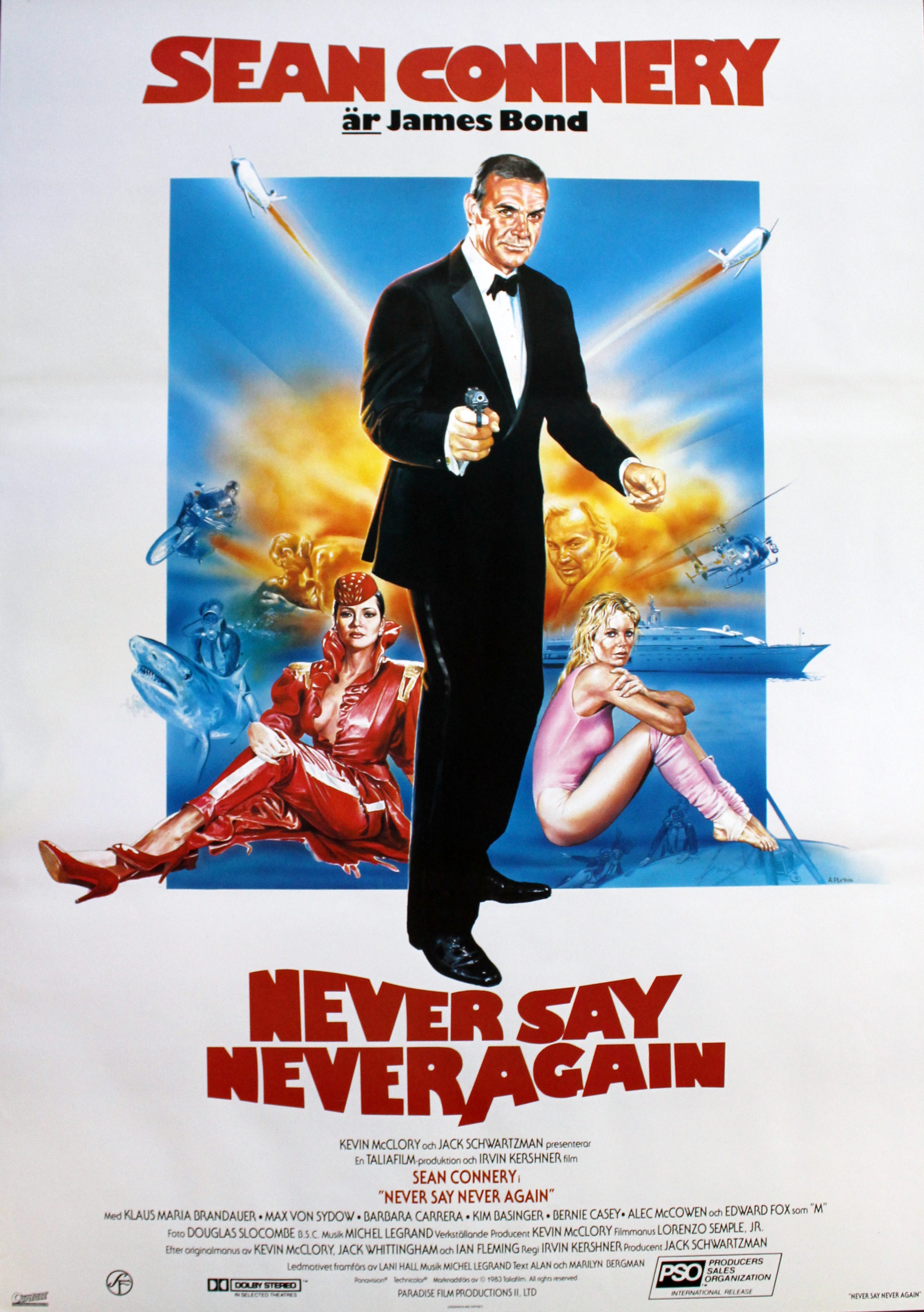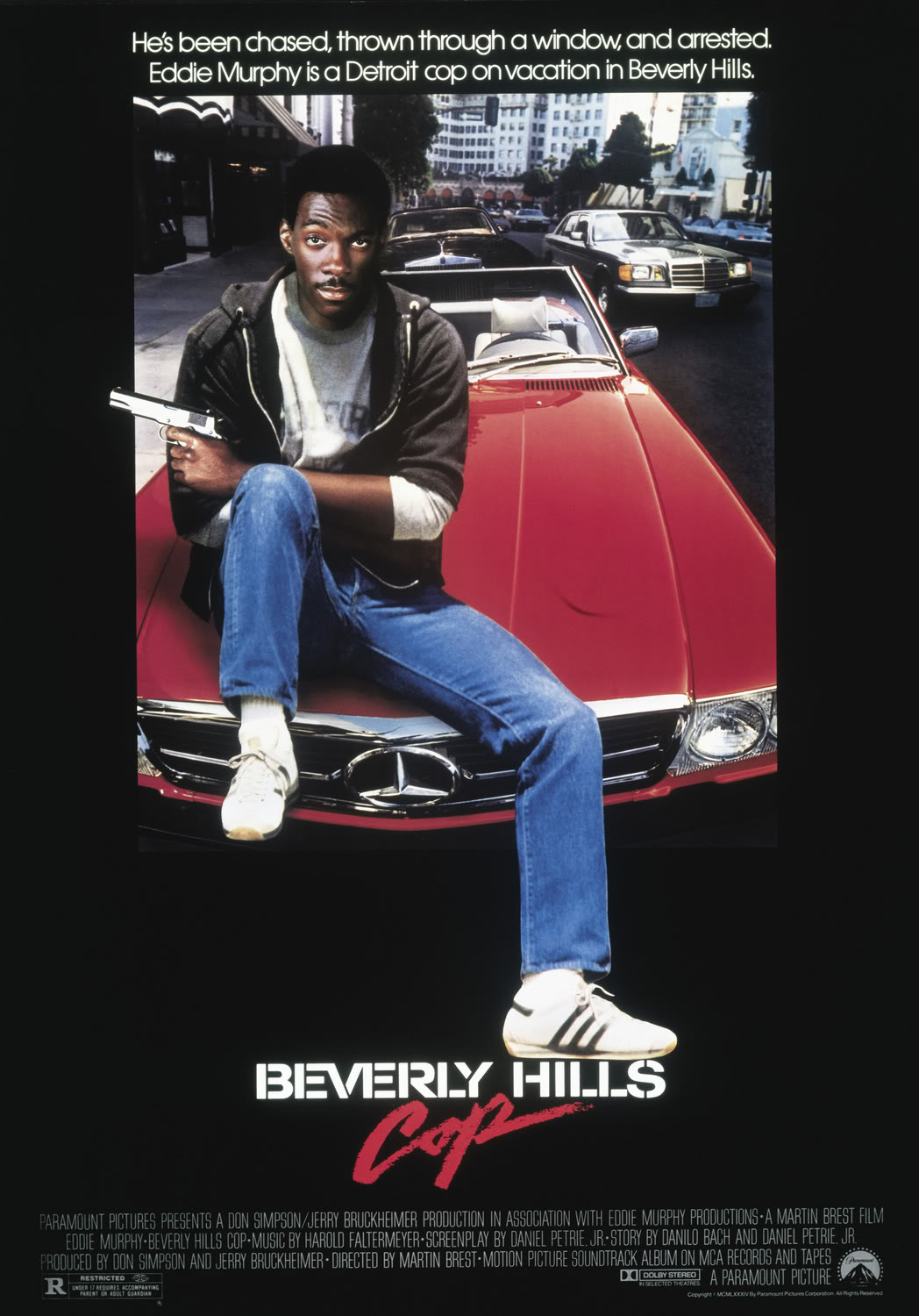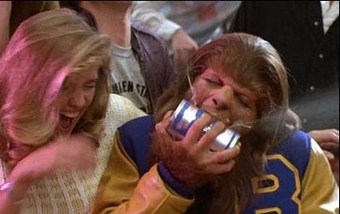As the plot of this film is essentially the same as every James Bond movie made before Casino Royale, I am not going to recap it in any detail. Rather, I will be letting the movie tell itself.
The movie opens with SPECTRE stealing some nuclear warheads from the US Navy. The leader of SPECTRE, Blofeld, is played by Oscar-winner Max Von Sydow.
And you know what? He doesn't have to open his eyes when he talks. He's number one! SPECTRE uses this US Navy goober - who also played Superman's rival for Lana Lang in Superman III - to steal the nukes.
Don't get too attached. He's going to be murdered shortly after this.
Fifty-two at the time of filming, Sean Connery's 007 is re-enlisted to help the British retrieve those nuclear warheads! M's first order for 007? Checking into a health spa to get back in shape.
Naturally, there's a shootout there. Bond tracks down a lead and meets an attractive young woman in Jamiaca. Unfortunately, she works for SPECTRE. Bond is unaware, so they sleep together and then go scuba diving because they're in the tropics! She tries to kill him with sharks ...
... who are no match for closing doors! Bond is rescued by a helpful female agent. "Now that you're here, I hope we're going to have some gratuitous sex and violence." They promptly sleep together.
Bond then meets Domino (Kim Basinger) who is dating Maximillian Largo, a millionaire who is heading up the nuke-theft operation.
She is also the sister of the Navy goober. It's complicated. Bond uses her to find out where Largo will be and meets him there that night. (At this point, Bond and Domino have not slept together.) Instead, Largo challenges Bond to a game that he invented. It's like if Atari made a video game version of Risk. "The game is called domination. I designed it myself. The problem is that I've never found a worthy adversary."
Naturally, Bond wins. Instead of the $250,000 that had been at stake, 007 chooses as his prize a dance with Domino. Largo - not at all a crazy, evil sociopath - is nonplussed. Meanwhile, the SPECTRE lady is still trying to kill Bond. She ends up killing the first 007 lover from the film then chases Bond around a scenic town.
He survives the chase and the two have a climatic showdown in which Bond kills her.
If you're counting at home, both women Bond has slept with in the movie are now dead. So ... not the best survival rate.
Bond returns to Largo's estate and kisses Domino in front of him to "get a rise out of him." Indeed he does. Largo does what we'd all do in that situation. He ties her up and auctions her off to the highest bidder among a group of generic Arab men.
We've all been there. Love is a nasty game. And to be fair, he did tell her earlier in the movie if she ever left him, he'd kill her. Bond manages to escape and rescues her. They sleep together but SPOILERS she doesn't die! The survival rate among Bond's lovers has now climbed to 33%, which I think we can all agree is very strong.
Bond and the US Navy track down Largo and the nuclear weapons, which are for some reason underground in a cave.
The Navy and Bond take the cave, but Largo escapes in a helicopter. So Felix, who in this movie actually helps Bond and isn't just a character to give the audience exposition, flies with Bond. Using 1980s jet packs.
Come on. Even at 52 years old, Bond is having a blast.
Bond chases Largo under the water. For some reason the US Navy - tasked with defending our country by using water warfare - does not follow. Luckily, and inexplicably, Domino is there. And she shoots Largo with a harpoon just in time to save Bond's life.
Even she seems surprised to be there.
Mission accomplished, Bond celebrates with Domino back at the hotel. Mr. Bean surprises Bond, who tosses him in the pool.
Mean old 007! Mr. Bean is only there to ask if you'll come back and work in her majesty's service again. "Never," he says, as the movie's title track comes on. "Never. Never. Never say never again." And Bond, 20 years into puns and all manner of sexual references, for the first time ever, looks at the camera and winks.
Whew. What a ride.
This movie was fun and didn't take itself too seriously. It was a pleasure to see Sean Connery back in the role he brought to life, and, as difficult as the plot was to follow in some parts, the story was no more crazy than any other Bond movie before it. I'm going to go ahead and give this movie 4 Patrick Swayze abs.
Extra abs
- Sean Connery was 52 years old in this movie and is still shirtless in, I'd wager, 30% of the scenes. Dude got it.
- Irvin Kirshner directed this. He also directed Empire Strikes Back, so you'll never hear me speak ill of him.
- I still can't get over the ending of this movie. BOND WINKS AT THE CAMERA. That's probably the best way for Connery to, finally, say good-bye to the role.








































